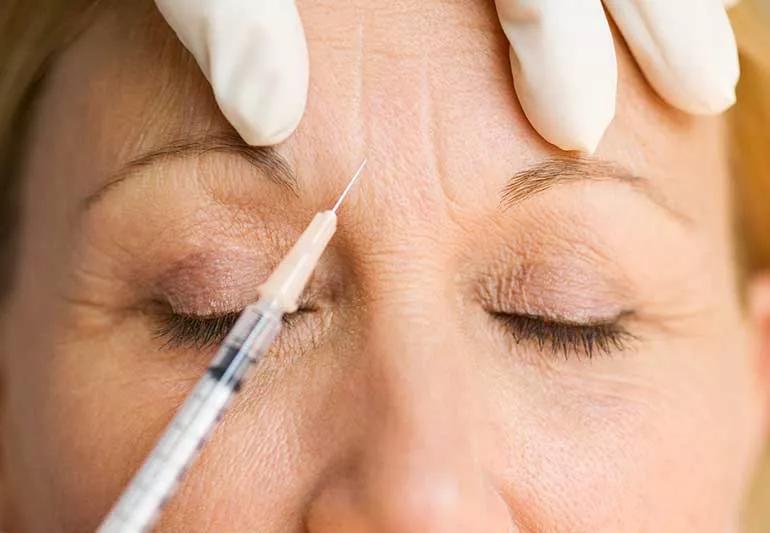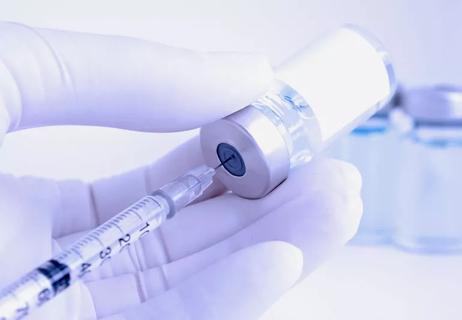They both treat fine lines and wrinkles, but how they’re made and how long results last differ

A hot topic in the skin community is a little thing called botulinum toxin. But you may know it by its stage name: Botox®.
Advertisement
Cleveland Clinic is a non-profit academic medical center. Advertising on our site helps support our mission. We do not endorse non-Cleveland Clinic products or services. Policy
While this drug has been in use for the last 20 years, there’s a newer brand on the market that’s become a popular alternative for some: Xeomin®, otherwise known as botulinum toxin type A, or incobotulinumtoxinA.
Dermatologist Chey Ranasinghe, MD, explains what Xeomin is, how it’s different from Botox and what to know about it.
Officially approved by the U.S. Federal Drug Administration (FDA) in 2010, Xeomin is the newest neuromuscular blocker on the market for various cosmetic and medical procedures.
First, here’s a quick refresher on neuromuscular blockers, in general. These are injectable drugs that are used to temporarily relax muscles in your face or other parts of your body. In addition to cosmetic uses such as getting rid of fine lines and wrinkles, it can help with medical issues like migraines, overactive bladder and eye conditions.
“Xeomin is similar to Botox and Dysport® in terms of its use,” says Dr. Ranasinghe.” It aims to temporarily relax the muscles that cause wrinkles, giving the skin a smoother and more youthful appearance.”
While they both have the same goal and are both applied through injection by needle, Xeomin isn’t a complete copy of Botox either. Here are some factors to compare when considering Botox or Xeomin:
Advertisement
The main distinction between Xeomin and Botox is how they’re manufactured. As Dr. Ranasinghe explains, Xeomin is a purified form of botulinum toxin type A, while Botox is composed of a complex mixture of proteins.
Essentially, this means that Xeomin doesn’t have any additives, while Botox does. This is often why Xeomin is nicknamed the “naked injectable.”
From aesthetic tweaks to the treatment of medical conditions, both Xeomin and Botox have a lot of overlap in what they can treat.
And both Xeomin and Botox have the same goal, and essentially can help with the same kind of needs, whether medical or cosmetic.
“There are no specific conditions that Xeomin treats that Botox cannot,” notes Dr. Ranasinghe.
Xeomin and Botox have both been approved for cosmetic and medical use, including:
So, why choose Xeomin versus Botox? It turns out there are a few reasons why you may opt for Xeomin over Botox — depending on your preference and needs.
Here are some benefits of using Xeomin over Botox:
When using neurotoxins for aesthetic purposes, the big plus for a lot of people is how long the effects last. If you’re getting certain areas of your face done, you may want to minimize the needed upkeep.
“The most notable benefit of using Xeomin over Botox is that the results last longer with Xeomin,” states Dr. Ranasinghe. “Results can last up to six months with Xeomin, compared to Botox results, which last for three to four months.”
Next is the speed factor, which Xeomin seems to be known for as well.
Dr. Ranasinghe points out that while the desired results after Botox usually take around two weeks to show up, the results of Xeomin can be seen within three to five days. Depending on what you want and how quickly you want it, this could be a pro for you as well.
With any kind of injection, you may be curious about possible side effects. While it’s rare, some people experience allergic reactions to Botox, like hives, itching or wheezing. Some have claimed that Xeomin can reduce that risk.
“With this purified form, the belief is that the risk for allergic reactions is also less with Xeomin compared to traditional Botox,” Dr. Ranasinghe adds.
At the moment, there aren’t any comparative studies between the two showing that Xeomin can have fewer side effects like swelling or headaches.
Though Xeomin may lead to fewer allergic reactions than Botox, post-treatment side effects can still happen for both.
Advertisement
Both injectables can cause:
Whether one is better than the other is entirely up to your personal preferences. Another important consideration is that you shouldn’t use Botox and Xeomin interchangeably.
The main reason many people stick with Botox is that it’s been around for longer, it’s a more well-known brand and you may already have a history of using it and know how you’ll respond. It’s generally recommended to commit to one — which you can decide with help from your dermatologist.
“Both products are safe and effective options for improving the appearance of fine lines and wrinkles on the face,” reassures Dr. Ranasinghe. “The best choice for you will depend on your needs and concerns, along with consulting your physician.”
Advertisement
Learn more about our editorial process.
Advertisement

Most recommended precautions center around minimizing bruising or swelling

With repeat injections over time, you may be able to slow the development of new wrinkles

The cosmetic injection may help train your muscles out of frowning, but there’s no hard data to say for sure

One reduces wrinkles by relaxing muscles; the other adds volume and smooths skin

The big difference with this procedure is the smaller dosing

It’s an FDA-approved treatment for urinary incontinence and overactive bladder

Both are used to treat fine lines and wrinkles

If you're tired of products that don’t stop your serious sweating, Botox could be life-changing

The best parenting style balances enforcing rules and showing plenty of love

Tips include cutting back on sugar, focusing on exercise and managing stress

It can be harder to let go when you’ve invested time, energy and emotions — but it might be the healthier choice long term